
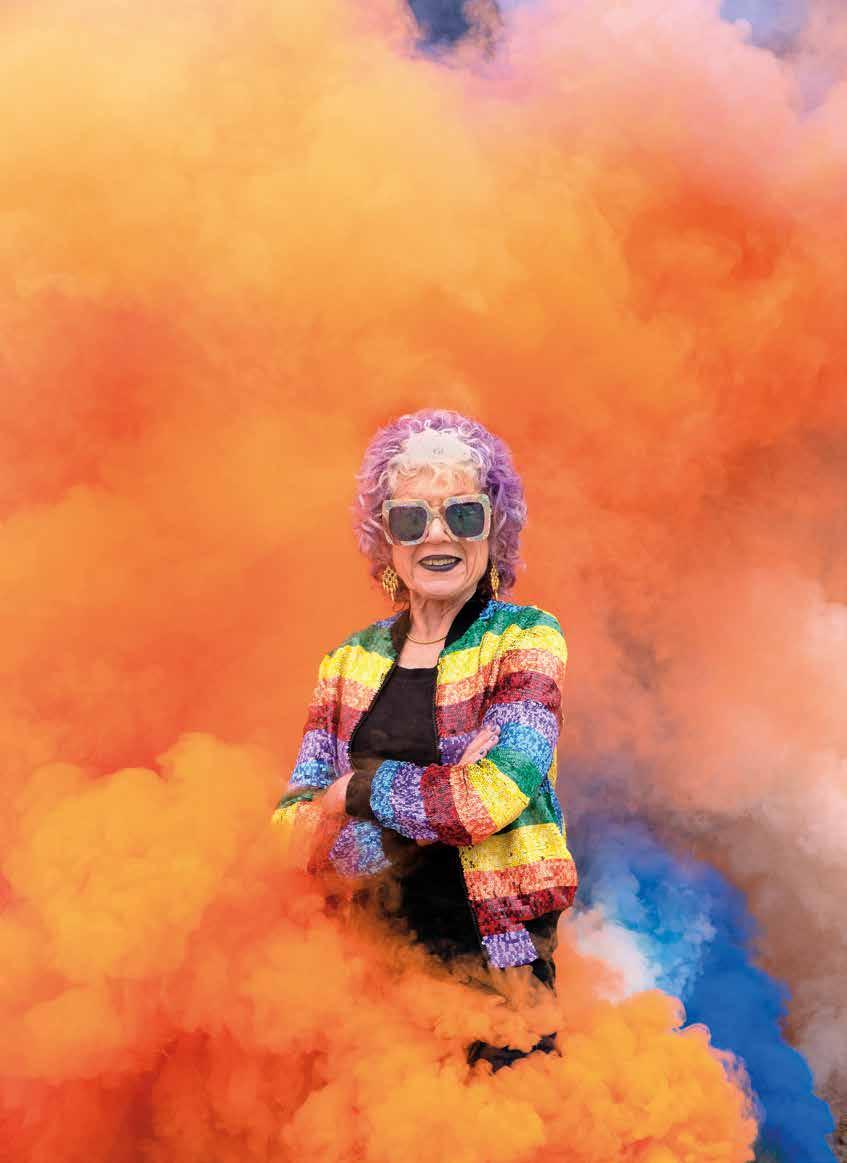




anno XIV | 78 maggio — giugno 2024 Supplemento n. 4
SUPPLEMENTO A CURA DI Alessia Caliendo
DIRETTORE
Massimiliano Tonelli
PUBBLICITÀ & MARKETING
Cristiana Margiacchi 393 6586637 Rosa Pittau 339 2882259 adv@artribune.com
EXTRASETTORE
downloadPubblicità s.r.l. via Boscovich 17 – Milano via Sardegna 69 – Roma 02 71091866 | 06 42011918 info@downloadadv.it
REDAZIONE | EDITORE via Ottavio Gasparri 13/17 Roma redazione@artribune.com
PROGETTO GRAFICO
Alessandro Naldi
STAMPA
CSQ – Centro Stampa Quotidiani via dell’Industria 52 Erbusco (BS)
COVER CREDITS
Fashion: Alessia Caliendo
Photographer: Luca Meneghel
Hair: Davide Perfetti
@ Blend Management
Make Up: Marta Vetere
@ Green Apple
Model: Diletta Paci
@ Next Management
Fashion Assistant: Ariadne Abetti
Photographer Assistant: Giulia Bottiani
Registrazione presso il Tribunale di Roma n. 184/2011 del 17/6/ 2011
Chiuso in redazione il 05/06/2024
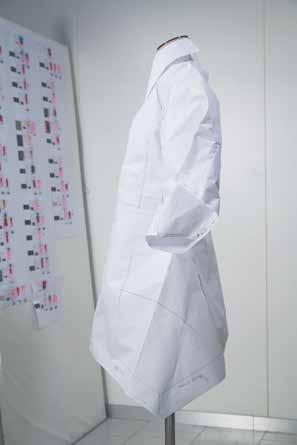
HIGH and Artribune meet with the common goal of celebrating creativity and art. This editorial initiative not only demonstrates HIGH’s commitment to supporting artistic talent but once again highlights the profound connection between fashion and art.
Artribune, with its authority in the world of art and visual culture, shares with HIGH the attention to aesthetics and innovation. Fashion, in fact, is considered by the brand to be an applied art form which requires the same care and dedication as other visual arts. HIGH’s connection with the art world is further supported by the HIGH PRIZE for Creative Excellence, awarded annually to a Master’s level Fine Arts graduate from the Royal College of Art in London.
HIGH combines innovative design with Made in Italy traditional tailoring to present an extraordinary mix of reinvented classics and cutting-edge clothing. These are designed to meet the needs of modern women who excel in their respective fields and have no need or desire to follow trends but choose to express their individuality and personal style in both their private and professional lives.
The collaboration between HIGH and Artribune highlights a shared appreciation of artistic expression in all its forms. This synergy strengthens the brand’s identity and helps communicate a fundamental concept for its creative mission: one in which beauty joins utility and art becomes an integral part of everyday life.
Alessia Caliendo

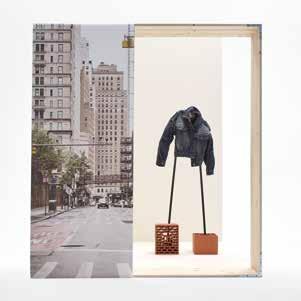

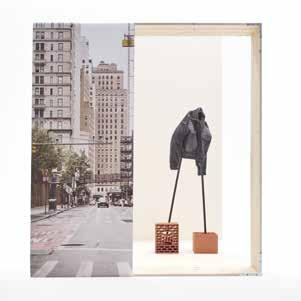



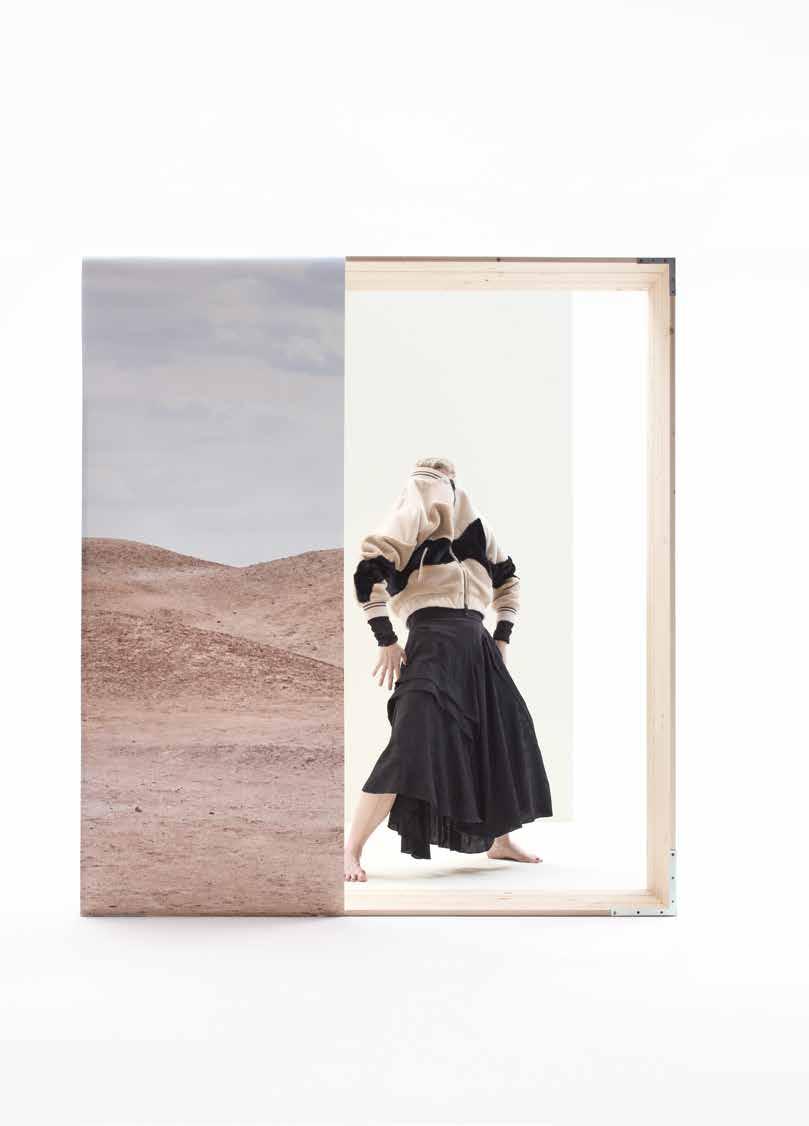
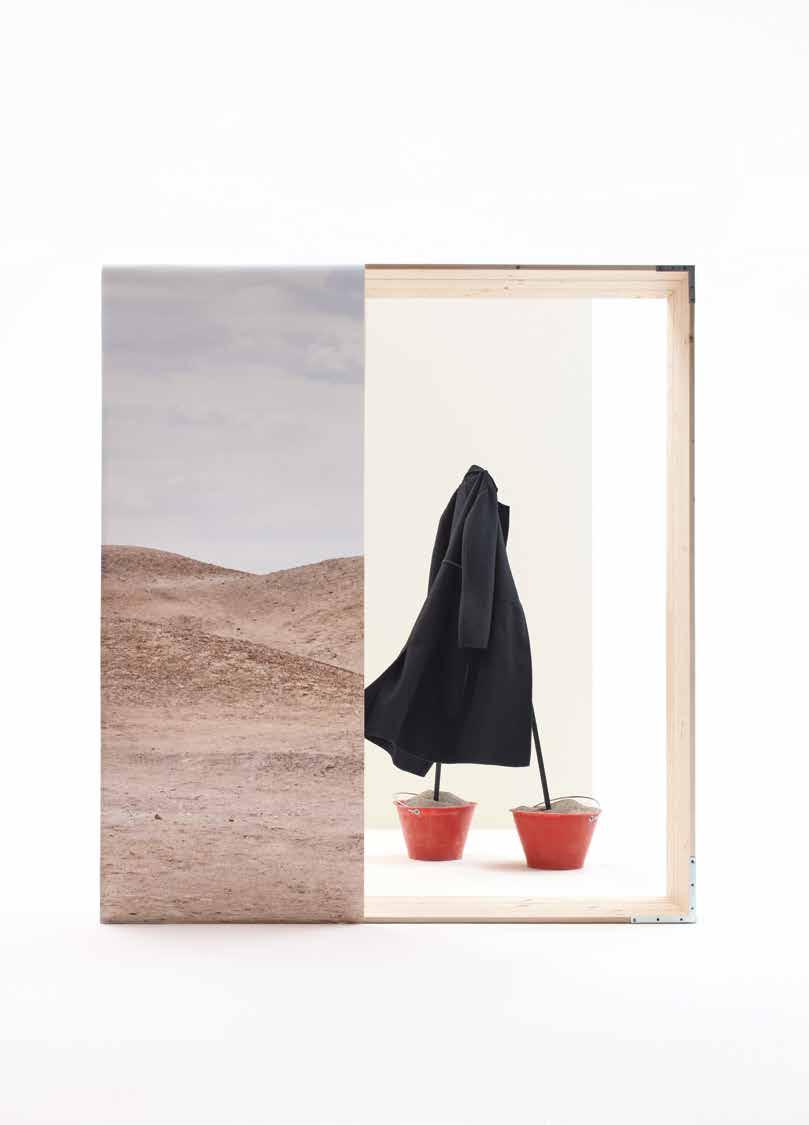

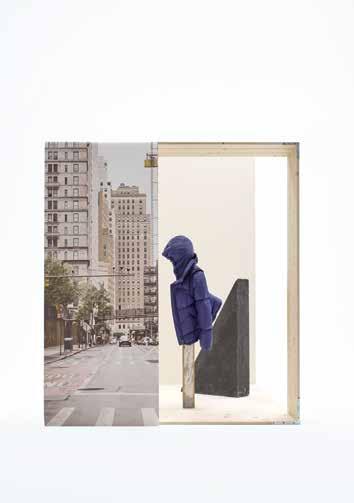

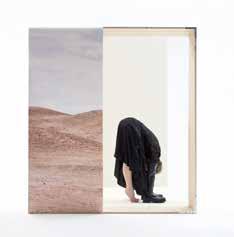












An annotated collection of the best art and photography exhibitions to visit between London, Paris, and Düsseldorf.
Louis Vuitton Foundation – Paris (until September 9, 2024)
The itinerant project curated by MoMA in New York arrives in Paris, giving shape to the atelier of Henri Matisse (Le Cateau-Cambrésis 1869–Nice 1954) painted by the artist in 1911. The objective is to bring together, alongside the painting, the objects that the French artist depicted in his studio. Thus, the Louis Vuitton Foundation commemorates the 70th anniversary of his passing. Matisse had created this piece of artwork for the Russian collector Sergei Shchukin, who, however, rejected it, leaving the painting in the artist’s possession for the following sixteen years. He had it exhibited in London, New York, Chicago, and Boston until 1927, when it was purchased by David Tennant, founder of the Gargoyle Club in London. In 1949, MoMA acquired it for its permanent collection. The Atelier Rouge displays his studio in Issy-les-Moulineaux, a suburb of Paris where the painter worked in 1909. The large canvas (260x390 cm) reproduces the furniture, two sculptures, a piece of terracotta, and a ceramic plate, as well as works of art such as The Young Sailor (1906), Corsica, and The Old Mill (1898), all of which are now exhibited in Paris. The collection also includes related paintings and sketches such as the 1913 Blue Window and the Large Red Interior from 1948.
ZANELE MUHOLI
Tate Modern – London (June 6, 2024 – January 26, 2025)
His photographs are forceful self-portraits that frequently fix their gaze on the spectator, inquisitors while still capturing the overflowing beauty of a proud, restless spirit. Zanele Muholi (Umlazi, Durban 1972) is a South African artist and activist who has dedicated her work to documenting South Africa’s black lesbian, gay, bisexual, transgender, queer, and intersex communities. She, for her part, defines herself as “a visual activist who practices art.” The Tate Modern in London has dedicated the largest exhibition ever held to her works, bringing together over two hundred and sixty shots to assess the total extent of the artist’s research. Her iconoclastic art is not a challenge to previous generations of photographers but rather a need to outline the profiles of new non-”conforming” identities, those of which are still not accepted by political, social, and artistic environments.
National Gallery – London (September 14, 2024 - January 19, 2025)
The most anticipated event of the celebrations for the bicentenary of the National Gallery, which opened to the public way back in 1824, brings together over 50 works by Vincent Van Gogh (Zundert 1853–Auvers-sur-Oise 1890) in London, thanks to funding from private collections and museums around the world. A unique opportunity to admire rarely exhibited works by the tormented Dutch painter while also better understanding his creative process is made possible by the presence of numerous drawings by the artist himself. Van Gogh: Poets and Lovers focuses on the two years spent in the south of France—between Arles and SaintRémy—during which the brilliant artist revolutionized his style in a symphony of colours and lyrical textures, drawing inspiration from poets, writers, and artists. This is how masterpieces such as the Starry Night over the Rhone (1888 Musée d’Orsay), The Yellow House (1888 Van Gogh Museum), the very famous Sunflowers (1888), and Van Gogh’s Chair (1889) were born.
THE CENTENARY EXHIBITION Center Pompidou – Paris (September 4, 2024 – January 6, 2025)
100 years after the birth of the Surrealism movement, the Centre Pompidou is organizing a Centenary Exhibition, bringing together numerous works of the greatest artists who enlivened the instances of an idea that revolutionized the history of 20th century art, such as Salvador Dalí, René Magritte, Dorothea Tanning, Tatsuo Ikeda, Giorgio de Chirico, Leonora Carrington, Max Ernst, Helen Lundeberg, and Joan Miró. The exhibition itinerary was conceived as a labyrinth to commemorate the movement, with André Breton’s original Manifesto, a founding document of Surrealism, at its core. The document, usually preserved in the collections of the Bibliothèque nationale de France, is exceptionally exhibited for the occasion, enhanced by multimedia equipment.
Kunstpalast – Dusseldorf (September 5, 2024 - February 2, 2025)
Some believe him to be the greatest living visual artist. Certainly, Gerhard Richter (Dresden 1932), who turned 92 last February, is recognized among the undisputed masters of the 20th and 21st centuries for his accomplishments in art. The hidden gems referred to in the title of the exhibition promoted by Kunstpalast in Dusseldorf (Hidden Gems: Works from Rhenish Private Collections) are works by the author that are housed in a private collection, many of which are being displayed for the first time in public. Through more than 130 works, the itinerary covers the entire time span of Richter’s activity, from the early Sixties, when the artist had the opportunity to meet figures in the Rhineland who would strongly influence him, such as Sigmar Polke and Gunther Uecker, continuing to today.
Livia Montagnoli

Pinacoteca Agnelli is a dynamic artistic institution which has been relaunched in 2022 through a new contemporary mission. The exhibition program comprises exhibitions, outdoor installations as well as projects involving the permanent collection. In this interview Sarah Cosulich, director of the museum, talks about the vision for the new Pinacoteca Agnelli and how it has turned into an international hub. She speaks about developing a new identity sparked by a reflection on the institution’s specific context: from former car factory to cultural center, through a participatory approach which attracts a diverse audience.
The exhibition program of Pinacoteca Agnelli is developed along three project lines. Can you explain how each of these lines contributes to the mission of creating a strong programmatic identity for the institution?
Our program aims to bring an organic curatorial vision by means of three different projects which take place in three different spaces of the museum: Beyond the Collection aims to reactivate our permanent collection which is the core of
the institution. It presents masterpieces from the Eighteenth, Nineteenth and Twentieth centuries, by artists such as Canova, Canaletto, Picasso, Manet, Modigliani and Matisse; temporary exhibitions are dedicated to pioneering contemporary artists who through their work build links between the history of art and the present, also in connection with the specificity of Lingotto, the former FIAT factory that houses our museum; Pista 500 is the outdoor project on the former car testing track on the roof. It features sculptures and installations in dialogue with the surrounding landscape as well as with the architecture of the building. With the new program inaugurated in 2022, we have imagined a dynamic center for art with a precise identity that respects the tradition of the institution while taking into consideration the specific context of the Lingotto, its heritage as industrial archaeological site and the history it contains. The factory production and its imagery are fundamental elements in guiding us in the development of an experimental exhibition program, open to a wide audience.


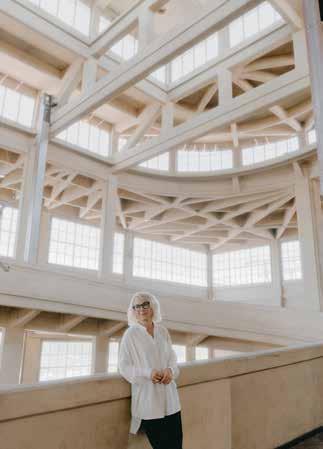
Pista 500 represents an innovative project that combines art and industrial archaeology. How did the idea of transforming this historic track into an outdoor exhibition come about?
When I was called by president Ginevra Elkann to rethink the program of the Pinacoteca Agnelli, I thought that the historic testing track on the roof of the Lingotto - just transformed by FIAT into a hanging garden - offered a unique and unrepeatable opportunity for art. Together with Lucrezia Calabrò Visconti, chief curator at Pinacoteca, we invited important international artists who reacted by establishing connections with the imagery and implications of this site. They proposed sculptural works but also light, sound and video installations. Their works on the track touch upon relevant themes of the present and stimulate a reflection while interacting with the public in unexpected ways. From a closed circuit Pista 500 is now a road open to the city where art is the protagonist 30 meters above the ground with an incredible view of the landscape and the city.
Your career has often given space to women artists. How is this commitment reflected in the
curatorial choices and exhibition projects at Pinacoteca Agnelli?
The former FIAT factory is a place which implies a strong male presence, if we think about cars and production. Also the narrative of art history is mainly male-centered , as we notice by looking at Pinacoteca Agnelli’s permanent collection. It comprises masterpieces by fundamental artists, all men who - in this case - often portray women. The program of the institution reflects the desire to rebalance this narrative. For our first exhibitions, we have presented important women artists like Sylvie Fleury with a pioneering feminist pop approach. Or Lee Lozano, a fundamental revolutionary American artist active in the 1960s. On the Pista, Dominique Gonzalez-Foerster imagined a giant wallpaper for the parabolic curve which interweaves thousands of images, includes revolutionary women who changed history, recounts feminist movements and workers’ struggles together with the history of art, cinema and activism. On the roof we also feature the double bronze scissors by VALIE EXPORT , which quotes a female activity while speaking of the body and architecture through a violent and monumental gesture. Or
Louise Lawler, who in her sound installation imitates the chirping of different birds while pronouncing the names of important contemporary male artists.
Beyond the Collection is an exhibition project that questions the presences and absences of the permanent collection. Can you tell us about the motivations behind this approach and how you believe it can enrich the understanding of art history and historiography?
The project dedicated to the reactivation of the permanent collection originates each time from a different work. Through the engagement of contemporary artists or the collaboration with other prestigious national and international collections Beyond the Collection becomes a privileged starting point for new narratives that can read the heritage of the museum through contemporary themes. The objective is also to develop narratives that can challenge traditional readings of art history interpretations. These exhibition projects become a critical tool for looking at the present, as in the case of Lucy Mckenzie’s project in dialogue with Canova who proposes a reflection on the construction of models and symbols, not just in classical statuary, but also in decorative sculpture and shop windows displays. The exhibition on Picasso and Dora Maar in 2022 investigated the mutual suggestions between the two artists bringing Maar back to light not only as a muse but as a multifaceted artist and photographer at the peak of her career.

Pinacoteca Agnelli places a strong emphasis on inclusiveness and the participation of a variety of different audiences. What specific strategies and programs do you plan to implement in the future?
Our institution is open to different audiences, from those who are interested in historical art to those who follow contemporary art, architecture, industrial archeology or even car or botany enthusiasts. The rooftop track with its new garden has been transformed from a productive place to a space to be experienced together, a site open to different disciplines and gazes. Some installations lead us to look at the present from a perspective of inclusiveness, like the “Yes To All” sign by Sylvie Fleury , the neon installed on the roof of the institution. It is a manifesto of our new course. Rirkrit Tiravanija’s ping pong tables, for example, question the concept of national belonging and stimulate the experimentation of new forms of sociality. The aim of the Pinacoteca Agnelli is to be a place of sharing and an all-round destination. We develop exhibitions and contents but also new initiatives dedicated to young adults, families and schools. Or events such as presentations and open-air cinema.
HIGH supports this journal. What role does fashion have in your daily life as a woman in the arts?
What we wear says something about us: clothing accompanies us and defines us. It is an extension of our body and our identity. And it is also a medium of art. It is indeed interesting to note how fashion is present at the moment in the exhibitions in the Pinacoteca. Lucy McKenzie looks at the ideal of beauty from Canova’s sculpture to today and how it is represented in serial mannequins and clothing. Thomas Bayrlethe German pioneer protagonist of a major retrospective at Pinacoteca - has looked at fashion since the 1960s by imagining plastic raincoats with pop motifs that can be worn by the public.
Alessia Caliendo

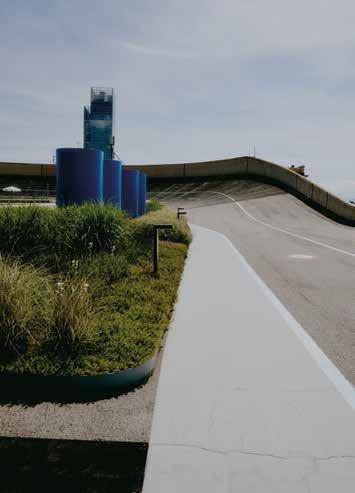












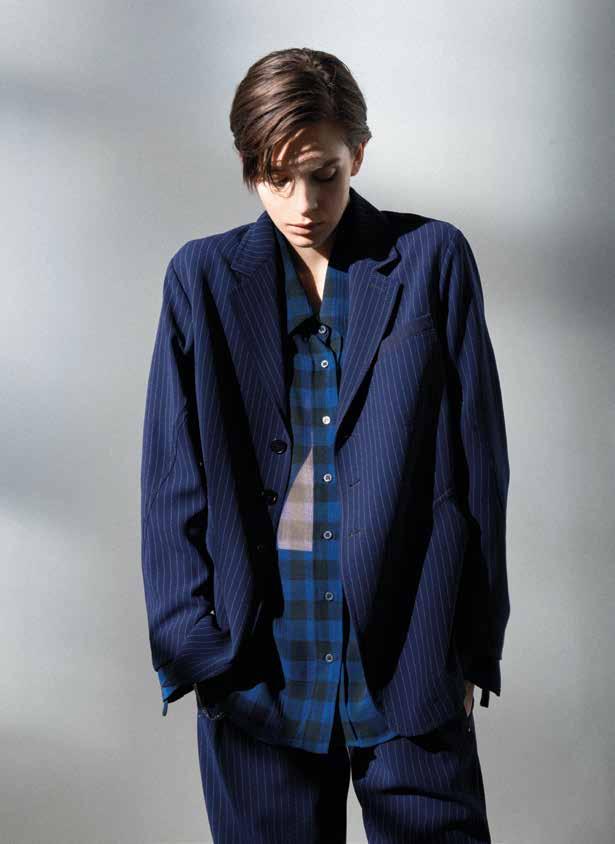
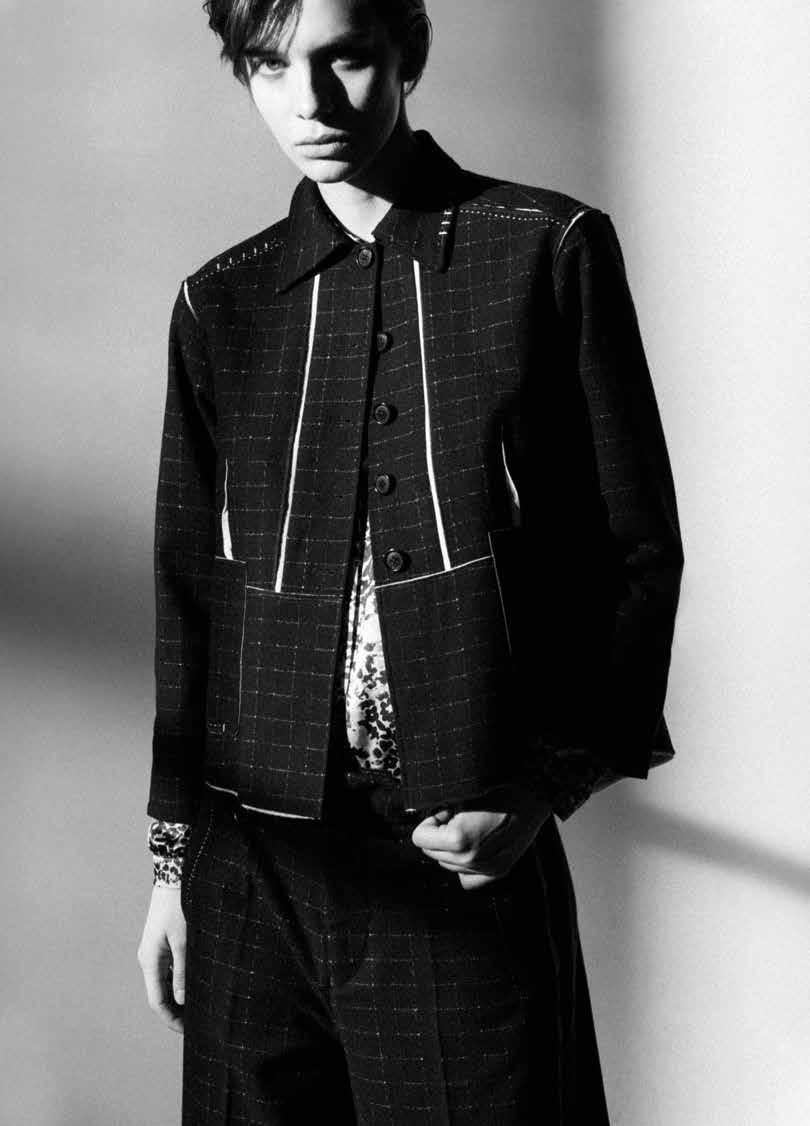


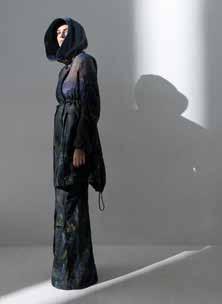



Fashion
Alessia Caliendo
Photographer
Luca Meneghel
Hair
Davide Perfetti @ Blend Management
Make Up
Marta
Model
Diletta Paci @ Next Management
Fashion Assistant
Ariadne Abetti
Photographer Assistant
Giulia Bottiani
Professor of Art History at the Royal College of Art, Gemma Blackshaw in London is the reference point for the HIGH PRIZE for Creative Excellence, which has been awarded to a student of the Master of Research program every year, selecting in the interdisciplinary—as a founding peculiarity of the Master in question— a value similar to the identity of HIGH since 2020. Writer, researcher, and teacher, Gemma often works in collaboration with artists. At the Royal College of Art, in collaboration with the artist and writer Esther Teichmann, she is focused on providing her students with the necessary tools to broaden their fields of interest and structuring a comprehensive and multidisciplinary approach to creativity. We talked about it with her, delving into the concept of “caring for” and her relationship with the arts.
At the Royal College of Art, you contribute to the organization of the Master of Research program. What is it, what objectives does it pursue, and how can it help students develop creativity?
The Master of Research program is interdisciplinary: bringing together students from architecture, communication, design, visual arts, and experimental humanistic disciplines to follow a common strategy, thinking of their activities as a tool for transformation and, in turn, incorporating the transformation in comparison with the other disciplines. The students come to us to pursue their chosen goal. Many of them have completed Master of Arts programs. Most of them are already consolidated in their roles as artists, for example (or as writers, curators, architects, product designers, communicators—the list could go on). The students come to expand their understanding of a critical goal for themselves through which they may filter their practice. They come to us as practitioners. Drawing on approaches borrowed from other disciplines, we educate students on how to become researchers.
Your work at the Master of Research is therefore based on an interdisciplinary approach. What tools and techniques do you use to introduce this method to students?
“Inter” is a Latin prefix meaning “between” or “in the middle of.” It also describes situations of mutuality, reciprocity, and exchange; being together ultimately for each other - think, for

Photgrapher: Gregor Petrikovic
example, of the word interdependence. In our work at MRes RCA, we underline the benefits you can gain by placing your work in the interchange between disciplines and departments that universities often separate. The interdisciplinary space is a space of freedom, risk, and experimentation: disciplines cross over each other; different possibilities are explored; hierarchies are put in discussion; knowledge is not stored but shared. Through many different teaching methods, we present students with often unfamiliar, suppressed, and overlooked examples of work that point us toward new ways of seeing, thinking, and doing.
I would like to focus on the concept of care. What does it have to do with art?
Artists make what I believe are absolutely vital contributions to our understanding of the historical and contemporary structures of health, medicine, and care: drawing our attention to the questions of gender, race, class, sexuality, and ability that continue to sharply differentiate our experience of what it means to be ill and/or disabled and/or a recipient of care and/or a donor of care; allowing us to be critical. I co-founded the Health & Care staff research group at the School of Arts & Humanities, which includes artists, writers, filmmakers, theorists, and historians who research contexts, environments, embodiments, relationships, and material condi-
tions of health and care. The students of MRes come to us with their own research projects that they consider of importance, requiring their and our attention; the intersection between women’s well-being and modern and contemporary art and literature is my focus.
And how does this interest flow into the Master of Research program?
The team of the MRes RCA program includes a small group of active-research professionals. Our teaching is dynamic because it is guided by our research. We teach according to our interests and skills, sharing progress in real-time, remaining open to the possibility that the teaching experience can evolve through the course of work. In my contributions, I share many of the creative research methods I am developing (through writing, curating, and archiving) while I strive to attend to the work I do as an art historian and feminist researching the lives of sick women. How do you care for a historical document—such as a handwritten letter from the early 20th century written from the bed of a model sick artist—in an archive? This is just one example of the many questions about our method—or how we work with our material—that I reflect on with students when I share the work I do investigating art history, epistolary exchanges, and medicine.
Livia Montagnoli
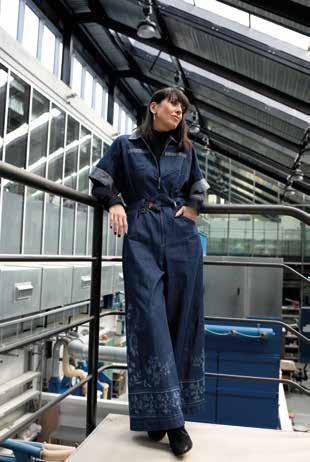
Fashion and art are able to follow a common path, joining forces to promote an innovative vision of the contemporary world while enriching one another. This is demonstrated by the successful partnership between HIGH and London’s Royal College of Art, which resulted in the establishment of the HIGH PRIZE for Creative Excellence in 2020. A moment in which the value of creative thought is recognized and rewarded by selecting a graduate Master of Research student from the famed London art school.
LONDON’S ROYAL COLLEGE OF ART
The prize, which has solidified through the years—now in its fifth edition— has led to the establishment of an operation, the responsibility entrusted to the professor of Art History and Senior Research Tutor at the School of Arts & Humanities (as well as head of the Master of Research) Gemma Blackshaw, who in collaboration with HIGH, annually chooses a shortlist of deserving graduates aspiring to the prize, working in various media whose aesthetics and creative projects align with HIGH. This equilibrium is based on two major focuses: one is thematic and the other expressive. HIGH’s goal is to support through the award initiatives that focus on the human body and the spaces that the body occupies, even if only conceptually. This starts with artists who show they have an innovative and cross-media approach, taking into consideration different materials such as ceramic, glass, jewels, and metals, as well as expressive tools from painting to photography, from video to printing, and sculpture. The search for a connection between the brand and the selected artists is particularly focused on works that demonstrate an innovative approach to material treatment, the result of a clear ability to manipulate them in a creative way.
Until 2023, the shortlist for the prize was announced during the Royal College of Art’s graduation ceremony, choosing one artist from each discipline. From 2024, however, the selection focuses on graduates of the Master of Research, among whom the next winner will be identified. They will then follow the artists awarded in previous editions: Bethany Walker (2020), Katrine Skovsgaard (2021), and Saruha Kilaru (2022). A list so far entirely female as demonstrated by the victory of Makiko Harris in 2023: the multidisciplinary artist originally from San Francisco was awarded for her research in the themes of gender, the construction of identity, the cultural stereotypes linked to the feminine sphere, and gender hierarchies pursued through painting, sculpture, and installation.
The establishment of the HIGH PRIZE is therefore proving to be an excellent opportunity to enhance emerging art while at the same time narrating the brand’s identity: in the development of its fashion collections, HIGH draws inspiration from all forms of art. Design itself and creative processes are profoundly influenced by the works of artists and artisans as evidenced by the “Artist@High” capsule collection, which comes to life through collaborations, events, and projects—online and offline—conceived with the idea of producing a benefit for all parties involved. The meeting between the HIGH designers and the artists involved provides inspiration for both those who create art and those who work to consolidate the HIGH ideals and aesthetics. In 2023, for example, the visual identity of HIGH’s Autumn/ Winter collection was linked to the works of Ukrainian artist Olha Pryymak, whose paintings are born from performances during tea ceremonies. The same collection included images by Elissa Jane Diver from the OperCulum series on the process of linking language with familiar items. (lm)

Founded in 2007, HIGH is an Italian brand founded on a unique mixture of aesthetic influences taking inspiration form Northern European cultures, in particular Anglo-Saxon, Germanic, and Scandinavian. This combination of cultural influences, combined with Italian manufacturing tradition, has given life to a brand that creates clothes for women who wish to express their individuality in everyday life. HIGH’s intention is to enable women to express originality and personality in a way that is taken seriously. The concept of “everyday couture” was born precisely from this philosophy: offering clothes made with care and attention that are intended for everyday use.
HIGH’s creative and production process is as interesting as its garments. The models are conceived in 3 dimensions around the bodythe back and sides are important as the front. This technique is similar to that used for couture process.
Today, despite having optimised the production, HIGH maintains the original philosophy: the garments are still designed to wrap around the body in a three-dimensional way with hidden details that are revealed only at a second glance. Each piece of HIGH clothing is designed to provide an experience for both the wearer and the viewer.

Quality is another fundamental aspect of HIGH. All of the collections are designed, distributed and mainly produced in Italy, in Rimini, where the brand has its factory. This positioning guarantees its quality standard and allows for control over every phase of production, from concept to final delivery. The union between Northern European aesthetics and Italian craftsmanship creates a unique style of clothing that not only looks great but is a pleasure to wear, thanks to the attention to detail and the quality of the materials used.
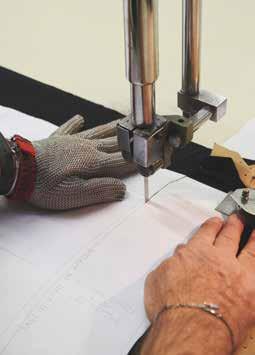
The Autumn Winter 2024 “Style Pioneer” collection draws inspiration from America and a fusion of old-world tradition with new-world technology. How did this idea evolve du- ring the design process?

HIGH’s Northern European aesthetic takes on the pioneering attitude of the New World a land with its big skies and even bigger dreams. This season’s volumes are more exaggerated than ever. We reference striking oil - ‘black gold’and we explore the contradictory aspects of severity and sophistication of black. Traditional models are reinvented and repurposed. There’s a landscape print, neckerchief patterns, patchwork, Texas checks, and Ditsy florals. These are garments that are purposefully functional: sleeves and skirts rolled up, trousers with lowered hems, and rodeo ruffles with floral decorations and a touch of cowboy.
The foundations of HIGH are born on the concept of “Everyday couture”: garments skillfully made for everyday life. Can you explain this to us?
The term “Everyday Couture” refers to the fact that our signature pieces are created with care comparable to the couture process, demonstrating an attention to detail not usually found in Ready to Wear. Couture also refers to the way garments are designed, made, and tailored to the individual – it is the individuality we aspire to.
There is a notable emphasis on reuse, reinvention, and craftsmanship with techniques such as overdyeing, patchwork, and visible alterations. How does all this translate into HIGH garments?
At HIGH, evidence of use and alteration adds character to each garment. The handcrafted finishes make each piece unique, an aspect we greatly appreciate. Many of our garments are tridimensional sewn to follow the contours of the body. We also design garments with oversize volumes, a silhouette initially independent of the wearer which then becomes an accomplice to personal expression and identity.
How does HIGH approach sustainability in fashion and what role does craftsmanship play in your philosophy?
We approach sustainability on a case-by-case basis. Along with our ongoing research into the latest fabric and garment manufacturing processes, we continually investigate sustainable methods of producing materials and generating prints. This is particularly evident in the artisanal finishes applied by hand to our garments where this aspect is easily recognizable.
Alessia Caliendo

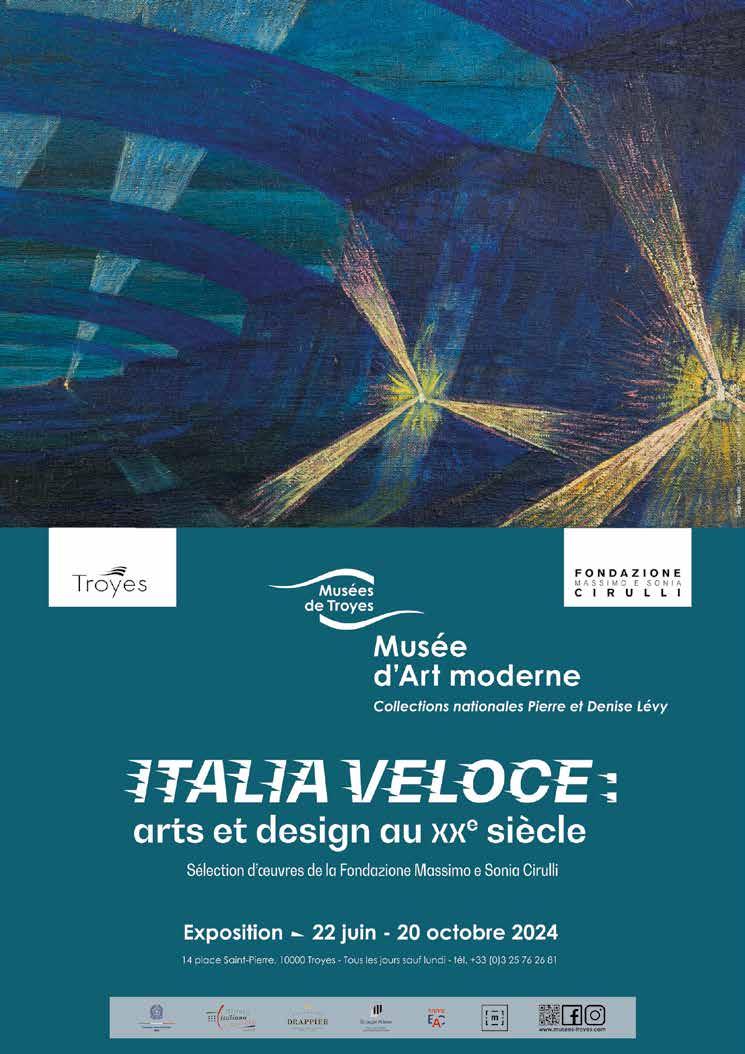


In 1844, John Mercer created cotton sateen, whose advanced weaving technique gives the fabric a smooth and shiny surface. Furthermore, the mercerization process makes it strong and durable, characteristics that have allowed its use in many practical places over the years.
HIGH’s Sateen capsule collection chooses to modernize cotton satin with the introduction of tech-stretch elastic fibers, allowing you to reinterpret old designs and create new styles.
The collection is made up of multi-stitched and multi-panel garments characterized by both matte and shiny surfaces. These designs rework elements of popular tradition, classic tailoring, uniforms, and work clothing.
The result is a fusion of tradition, innovation, utility, and functionality—distinctive elements of the brand HIGH.
Alessia Caliendo
FRANCE
18 Rue Vital Carles - 33000 BORDEAUX
T. +33 (0)5 56 44 85 06 bordeaux@high-everydaycouture.com
36 Rue Basse - 59800 LILLE
T. +33 (0)3 20 06 44 94 lille@high-everydaycouture.com
16 Rue Emile Zola - 69002 LYON T. +33 (0)4 78 37 31 17 lyon@high-everydaycouture.com
3 Rue Fanny Peccot - 44000 NANTES T. +33 (0)2 40 35 13 20 nantes@high-everydaycouture.com
57 Rue Bonaparte - 79006 PARIS T. +33 (0)1 43 26 59 13 paris-bon@high-everydaycouture.com
Palais Des Congrés
2 Place de la Porte Maillot - 75017 PARIS T. +33 (0)1 45 78 92 45 paris@high-everydaycouture.com
22 Rue De La Mésange - 67000 STRASBOURG T. +33 (0)3 88 23 08 08 strasbourg@high-everydaycouture.com
39 Rue De Metz - 31000 TOULOUSE T. +33 (0)5 61 22 11 94 toulouse@high-everydaycouture.com
RUSSIA
TRC EVROPEJSKI
Kiyevsky Station Square, 2 - 121059 MOSCOW T. +7 (0)495 229 84 15 moscow@high-everydaycouture.com
GERMANY
Grünstraße 5 - 40212 DÜSSELDORF T. +49 (0)211 86 32 89 92 duesseldorf@high-everydaycouture.com
Mittelstrasse 20-24 - 50672 KÖLN T. +49 (0)221 27 24 54 72 koeln@high-everydaycouture.com
Amiraplatz 3 - 80333 MÜNCHEN T. +49 (0)89 242 68 747 muenchen@high-everydaycouture.com
Alter Fischmarkt 18 - 48143 MÜNSTER T. +49 (0)251 98 29 94 84 muenster@high-everydaycouture.com
NETHERLANDS
Jansbinnensingel 10A - 6811 AJ ARNHEM T. +31 (0)26 445 8740
UNITED KINGDOM
HARVEY NICHOLS
109-125 Knightsbridge - SW1X 7RJ LONDON T. +44 (0)20 7935 2041
POLAND
Stary Browar, Ul. Pólwiejska 42 - 61-888 POZNAN T. +48 (0)782 42 42 42 poznan@high-everydaycouture.com
Klif, Ul. Okopowa 58/72 - 01-042 WARSAW T. +48 (0)605 49 00 49 warsaw@high-everydaycouture.com
Renoma, Ul. Swidnicka 40 - 50-024 WROCLAW T. +48 (0)885 90 40 40 wroclaw@high-everydaycouture.com
HIGH
Interfashion SpA Via Coriano 58/90 47924 Rimini, Italy T. +39 0541 706911
COMMUNICATION
HIGH Via Tortona, 35 20144 Milano highpr@interfashion.it
Designed and Printed in Italy © HIGH Autumn/Winter 2024-25 All rights reserved. No part of this pubblication may be reproduced, distribuited or transmitted in any form or by any means, including photocopying or other electronic or mechanical methods
















Top QUOTATION
Pant HAPPLY



Jacket COEXIST Skirt ATTRACTION



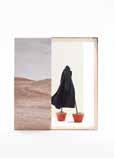
Jacket REPERTOIRE
Top RECITAL Skirt SCULPTED


Top GUISE
Skirt ATTRACTION
Shoes ADD UP
Jacket ON A WHIM
Jacket REPERTOIRE
Top RECITAL
Skirt SCULPTED
Top RECITAL Skirt SCULPTED
Jacket OUTLOOK Pant WISE UP
Jacket OUTLOOK
Pant WISE UP
Dress RHYMING
Coat DETERMINED
Dress PLAYFUL
Pant LURK
Coat RIGHT OF WAY
Jacket LISTEN TO
Pant HAPPLY
Dress PLAYFUL
Pant LURK
Top RECITAL
Skirt SCULPTED
Top GUISE
Skirt ATTRACTION
Coat DETERMINED
Dress RHYMING
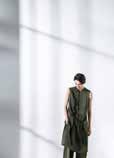
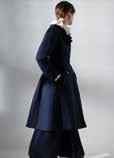




OPINION
IMPULSION


COEXIST
PATIENTLY

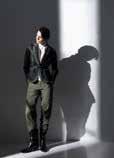


Gilet CANDID Dress FORMIDABLE



Jacket ATTTENTIVE
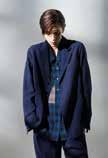


Top FORTUNATE
GAZE Dress AT-LENGTH Shoes ADD UP
